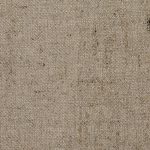When it comes to keeping your fabrics fresh, fabric softener can be an essential tool in your arsenal. You might not realize the versatility it offers, from enhancing the scent of your linens to revitalizing worn upholstery. By mixing it properly and applying it with care, you can achieve remarkable results. But there are specific techniques and tips that can maximize its effectiveness, ensuring your fabrics not only smell great but also feel soft and luxurious. Curious about how to master these methods and discover alternative uses?
Table of Contents
Key Takeaways
- Mix fabric softener with water in a spray bottle (1:3 ratio) for refreshing upholstery and curtains.
- Add fabric softener during the rinse cycle for laundry to enhance softness and reduce wrinkles.
- Use a softener compatible with fabric types and consider fragrance strength for a pleasant living space.
- Regularly dust and maintain curtains to prevent buildup and refresh scent with a diluted softener spray.
Understanding Fabric Softener Benefits
Fabric softener enhances your laundry by making fabrics feel softer, reducing static cling, and imparting a fresh scent.
When you add fabric softener to your wash, you're not just improving comfort; you're also extending the life of your clothes. The softening agents coat the fibers, making them less prone to wear and tear, which means your favorite items can last longer.
You'll also notice that using fabric softener helps with static cling, especially in colder months. It prevents your clothes from sticking together or clinging to your skin, making them easier to wear and more comfortable throughout the day.
Additionally, fabric softeners release a pleasant fragrance that lingers on your fabrics, giving your laundry that freshly washed smell. This is particularly beneficial for items like towels and bedding, where a comforting scent can enhance your experience.
Moreover, fabric softeners can make ironing easier. With fewer wrinkles, you'll spend less time fighting creases and more time enjoying your clean, soft clothes.
Choosing the Right Fabric Softener
Selecting the right fabric softener can greatly enhance your laundry experience, so consider your specific needs and preferences before making a choice. With various types available, it's essential to find one that meets your requirements. Do you want a natural option, or are you looking for a scent that lasts?
Here's a quick comparison to help you decide:
| Type | Benefits | Ideal For |
|---|---|---|
| Liquid Softener | Reduces static, softens fabrics | Everyday laundry |
| Dryer Sheets | Convenient, easy to use | Quick loads, travel |
| Natural Softener | Eco-friendly, no harsh chemicals | Sensitive skin, eco-conscious |
| Pods | Pre-measured, mess-free | Busy lifestyles |
Think about the scent and whether you prefer something light or strong. Also, consider any allergies or sensitivities in your household. By identifying your preferences, you can choose a fabric softener that not only meets your needs but also enhances the feel and fragrance of your laundry. So, take the time to explore your options, and you'll enjoy the benefits of fresh, soft fabrics.
Proper Dilution Techniques
To ensure optimal results, you'll want to dilute your fabric softener properly before adding it to your laundry. Concentrated fabric softeners can be too strong if used directly, leading to residue buildup on your clothes. Start by checking the manufacturer's instructions on the label for the recommended dilution ratio.
Use a clean container to mix the softener with water. Typically, a good rule of thumb is to mix one part fabric softener with three parts water. For example, if you're using one cup of fabric softener, mix it with three cups of water. Stir the mixture gently until it's well combined.
Once diluted, you can store the mixture in a labeled bottle for future use. This way, you won't have to prepare it each time you do laundry. Remember to shake the container lightly before each use to ensure an even consistency, as the softener may settle.
Incorporating Softener in Laundry
When incorporating softener into your laundry routine, add it during the rinse cycle for the best results. This ensures your fabrics soak up all the benefits, leaving them soft and fragrant. You can either use a liquid softener or dryer sheets, depending on your preference. If you opt for liquid, use the fabric softener dispenser in your washing machine, or pour it directly into the rinse water.
To help you determine how much softener to use, consider the following guidelines:
| Fabric Type | Recommended Amount | Notes |
|---|---|---|
| Light Loads | 1 capful | Great for smaller loads |
| Medium Loads | 2 capfuls | Ideal for regular laundry |
| Heavy Loads | 3 capfuls | Works well with bulky items |
Remember to always check the manufacturer's instructions on the fabric softener bottle. This not only prevents overuse but also keeps your fabrics in top shape. With these tips, you'll enjoy softer, fresher laundry that feels great against your skin. Happy washing!
Refreshing Upholstery and Curtains
When it comes to refreshing your upholstery and curtains, choosing the right fabric softener is key.
You'll want to apply it correctly to ensure your fabrics stay fresh and vibrant.
Plus, knowing how to care for your curtains will help maintain their beauty over time.
Selecting the Right Softener
Choosing the right fabric softener can significantly enhance the freshness of your upholstery and curtains. When selecting a softener, consider the fabric types in your home. Different materials react differently, so you'll want a product that's compatible with your fabrics. For example, if your upholstery is made from delicate materials like silk or linen, opt for a gentle, hypoallergenic softener. It'll ensure your fabrics remain soft without risking damage.
Next, think about scents. Some softeners come in various fragrances that can freshen up your living space. If you prefer a subtle aroma, choose a light scent; if you love strong fragrances, go for a more robust option. Just remember, too strong a scent could be overwhelming.
Also, check for added benefits. Some fabric softeners offer extra features like static control or wrinkle reduction, which can be particularly useful for curtains that tend to collect dust and wrinkles over time.
Lastly, always read the labels to ensure the product is safe for your upholstery and curtains, as this will help maintain their quality and prolong their life.
Application Techniques for Upholstery
Applying fabric softener correctly can make all the difference in refreshing your upholstery and curtains, helping to restore their original softness and scent.
Start by mixing a solution of fabric softener and water in a spray bottle—usually, a ratio of one part softener to three parts water works well. Always test a small, inconspicuous area first to ensure colorfastness and avoid any unwanted reactions.
When you're ready to refresh your fabrics, follow these tips for effective application:
- Spray Evenly: Hold the spray bottle about 12 inches away from the fabric and mist it evenly. Don't soak the fabric; a light even coat will do.
- Brush or Wipe: Use a soft brush or cloth to gently work the softener into the fabric. This helps distribute it and enhances the scent.
Caring for Curtains Properly
Caring for your curtains properly not only enhances their appearance but also prolongs their lifespan. Regular maintenance is key to keeping them looking fresh and vibrant.
Start by dusting your curtains weekly, using a soft cloth or a vacuum with a brush attachment. This helps prevent dust buildup and keeps your fabric looking clean.
When it's time for a deeper clean, check the care label. Most curtains can be machine-washed on a gentle cycle, but some may require hand washing or dry cleaning. If you're washing them, use a mild detergent and consider adding a fabric softener to keep them soft and static-free.
After washing, hang your curtains to dry. Avoid using a dryer, as the heat can damage the fabric. If your curtains need ironing, do so on a low setting while they're still slightly damp, as this helps remove wrinkles without scorching the material.
To keep your curtains smelling fresh, consider spraying a diluted fabric softener solution lightly on the fabric every few months. This simple step not only refreshes the scent but also creates a protective barrier against dust and dirt.
Regular care will keep your curtains looking beautiful for years to come.
Tips for Storing Fabrics
When it comes to storing fabrics, using proper folding techniques is key to preventing wrinkles and damage.
You'll also want to keep your fabrics in ideal storage conditions to maintain their freshness and quality.
Let's explore the best practices for both folding and storing your fabrics.
Proper Folding Techniques
To keep your fabrics looking fresh and wrinkle-free, mastering proper folding techniques is essential for effective storage. When you fold your fabrics correctly, you not only save space but also prevent creases from forming. Here are a few tips to ensure you're folding like a pro:
- Start with a clean surface: Make sure your workspace is free from dust or dirt. This helps keep your fabrics in pristine condition.
- Use smooth, even folds: Take your time to create straight, even folds. This minimizes the chances of unwanted creases developing over time.
When folding clothes or linens, be mindful of the fabric type. Delicate fabrics may require gentler handling, while sturdier materials can withstand a bit more pressure during folding.
Remember, the goal is to keep your items neat and tidy, making them easy to access whenever you need them.
With these techniques in your arsenal, you'll ensure your fabrics stay fresh and ready for use!
Ideal Storage Conditions
Creating the right environment for storing fabrics helps maintain their quality and freshness over time. To ensure your fabrics stay in top shape, consider these key factors: temperature, humidity, and light exposure.
| Factor | Ideal Condition | Tips |
|---|---|---|
| Temperature | 60-75°F (15-24°C) | Avoid extreme heat or cold. |
| Humidity | 30-50% | Use dehumidifiers in damp areas. |
| Light | Dark or dimly lit | Store in opaque containers or bags. |
Keep your fabrics in a cool, dry place to prevent mold and mildew. Using breathable storage bags or cotton sheets can help reduce dust accumulation while allowing air to circulate. Avoid plastic bags, as they can trap moisture and lead to unpleasant odors.
Lastly, make sure to regularly check on your stored fabrics. Occasionally, take them out, give them a gentle shake, and refresh them with fabric softener if needed. By following these tips, you'll keep your fabrics looking and feeling fresh for years to come.
Alternative Uses for Fabric Softener
Fabric softener isn't just for laundry; it can also work wonders around your home in unexpected ways. You might be surprised at how versatile this product is beyond making your clothes feel soft and smell great. Here are some clever alternative uses for fabric softener that you can try:
Dusting: Mix a solution of fabric softener and water in a spray bottle. Use it to wipe down surfaces and furniture. It'll not only trap dust but also leave a fresh scent.
Static Cling Reduction: Apply a small amount of fabric softener to a damp sponge and run it over your curtains or upholstery. This helps reduce static cling, making your fabric items feel more comfortable.
Freshening Up Carpets: Sprinkle a mixture of fabric softener and water onto your carpets, then vacuum after a few minutes. This will help eliminate odors and refresh the fibers.
Frequently Asked Questions
Can Fabric Softener Be Used on All Types of Fabrics?
No, fabric softener can't be used on all types of fabrics. It's best to avoid using it on microfiber, athletic wear, or any items with moisture-wicking properties, as it can reduce their effectiveness and absorbency.
Does Fabric Softener Reduce Static Cling in Clothes?
Yes, fabric softener does reduce static cling in clothes. It coats the fibers, allowing them to slide against each other more easily. You'll notice less static, especially in synthetic fabrics, after using it regularly.
How Often Should I Use Fabric Softener?
You should use fabric softener every wash for optimal softness and scent. However, if you're washing towels or athletic wear, consider skipping it to maintain their absorbency and performance. Balance is key for fabric care.
Can Fabric Softener Cause Allergies or Skin Irritation?
Yes, fabric softener can cause allergies or skin irritation in some people. If you notice redness or itching after using it, consider switching to a hypoallergenic option or reducing its use to prevent discomfort.
Is It Safe to Use Fabric Softener on Baby Clothes?
It's generally safe to use fabric softener on baby clothes, but you should opt for hypoallergenic options. Babies' sensitive skin can react, so always test a small area first to avoid irritation or allergies.
- Tetron Fabric for Marine Applications: Durability and Use Cases - June 18, 2025
- Tetron Fabric for Outdoor Furniture: Weather Resistance and Care - June 18, 2025
- Tetron Fabric for Wall Coverings: Style and Application Tips - June 18, 2025







